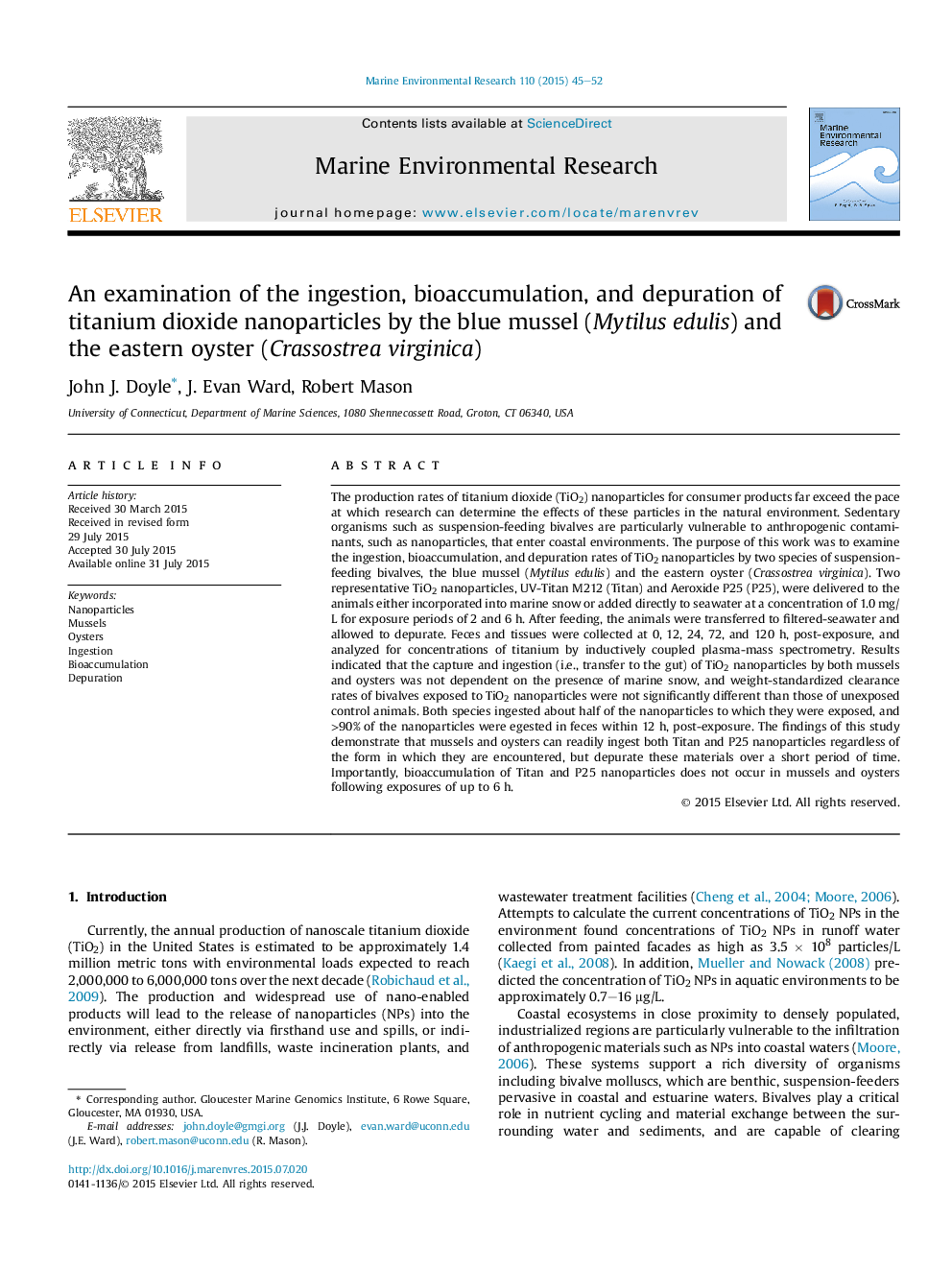| کد مقاله | کد نشریه | سال انتشار | مقاله انگلیسی | نسخه تمام متن |
|---|---|---|---|---|
| 6387642 | 1627572 | 2015 | 8 صفحه PDF | دانلود رایگان |
عنوان انگلیسی مقاله ISI
An examination of the ingestion, bioaccumulation, and depuration of titanium dioxide nanoparticles by the blue mussel (Mytilus edulis) and the eastern oyster (Crassostrea virginica)
دانلود مقاله + سفارش ترجمه
دانلود مقاله ISI انگلیسی
رایگان برای ایرانیان
کلمات کلیدی
موضوعات مرتبط
مهندسی و علوم پایه
علوم زمین و سیارات
اقیانوس شناسی
پیش نمایش صفحه اول مقاله

چکیده انگلیسی
The production rates of titanium dioxide (TiO2) nanoparticles for consumer products far exceed the pace at which research can determine the effects of these particles in the natural environment. Sedentary organisms such as suspension-feeding bivalves are particularly vulnerable to anthropogenic contaminants, such as nanoparticles, that enter coastal environments. The purpose of this work was to examine the ingestion, bioaccumulation, and depuration rates of TiO2 nanoparticles by two species of suspension-feeding bivalves, the blue mussel (Mytilus edulis) and the eastern oyster (Crassostrea virginica). Two representative TiO2 nanoparticles, UV-Titan M212 (Titan) and Aeroxide P25 (P25), were delivered to the animals either incorporated into marine snow or added directly to seawater at a concentration of 1.0Â mg/L for exposure periods of 2 and 6Â h. After feeding, the animals were transferred to filtered-seawater and allowed to depurate. Feces and tissues were collected at 0, 12, 24, 72, and 120Â h, post-exposure, and analyzed for concentrations of titanium by inductively coupled plasma-mass spectrometry. Results indicated that the capture and ingestion (i.e., transfer to the gut) of TiO2 nanoparticles by both mussels and oysters was not dependent on the presence of marine snow, and weight-standardized clearance rates of bivalves exposed to TiO2 nanoparticles were not significantly different than those of unexposed control animals. Both species ingested about half of the nanoparticles to which they were exposed, and >90% of the nanoparticles were egested in feces within 12Â h, post-exposure. The findings of this study demonstrate that mussels and oysters can readily ingest both Titan and P25 nanoparticles regardless of the form in which they are encountered, but depurate these materials over a short period of time. Importantly, bioaccumulation of Titan and P25 nanoparticles does not occur in mussels and oysters following exposures of up to 6Â h.
ناشر
Database: Elsevier - ScienceDirect (ساینس دایرکت)
Journal: Marine Environmental Research - Volume 110, September 2015, Pages 45-52
Journal: Marine Environmental Research - Volume 110, September 2015, Pages 45-52
نویسندگان
John J. Doyle, J. Evan Ward, Robert Mason,